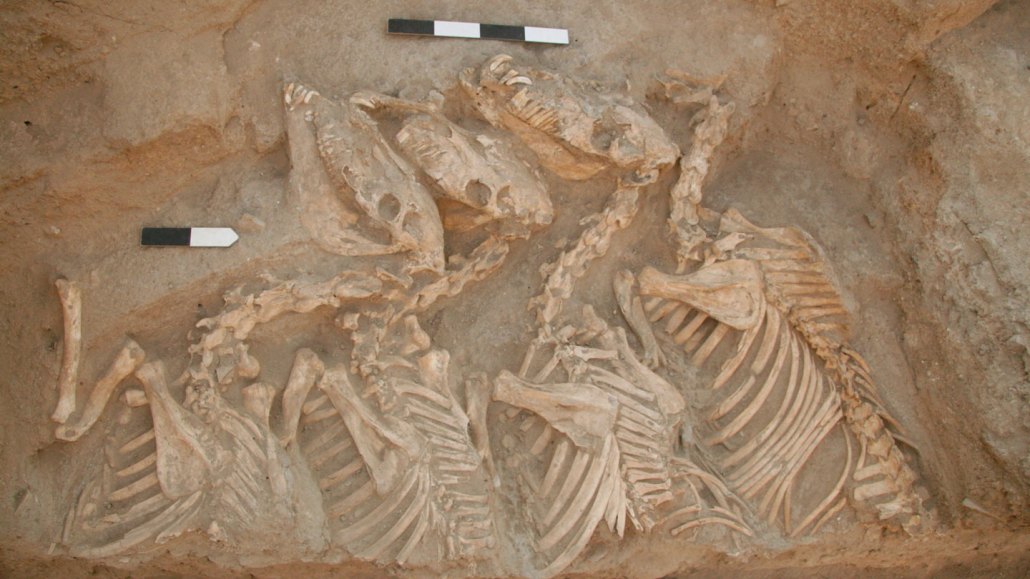
Genetic analysis pegged these ancient and mysterious equine skeletons as donkey-wild ass hybrids. They were excavated from the 4,500-year-old burial complex at Umm el-Marra in northern Syria.
© Glenn Schwartz/Johns Hopkins University

Genetic analysis pegged these ancient and mysterious equine skeletons as donkey-wild ass hybrids. They were excavated from the 4,500-year-old burial complex at Umm el-Marra in northern Syria.
© Glenn Schwartz/Johns Hopkins University